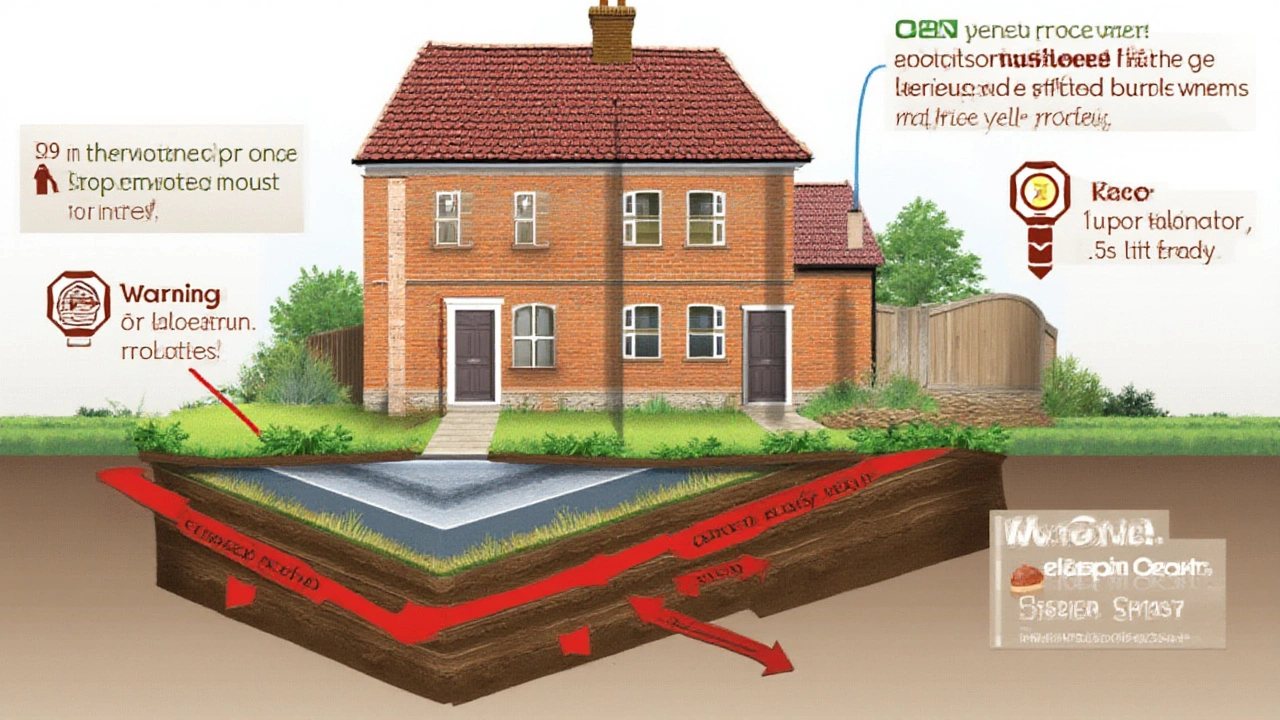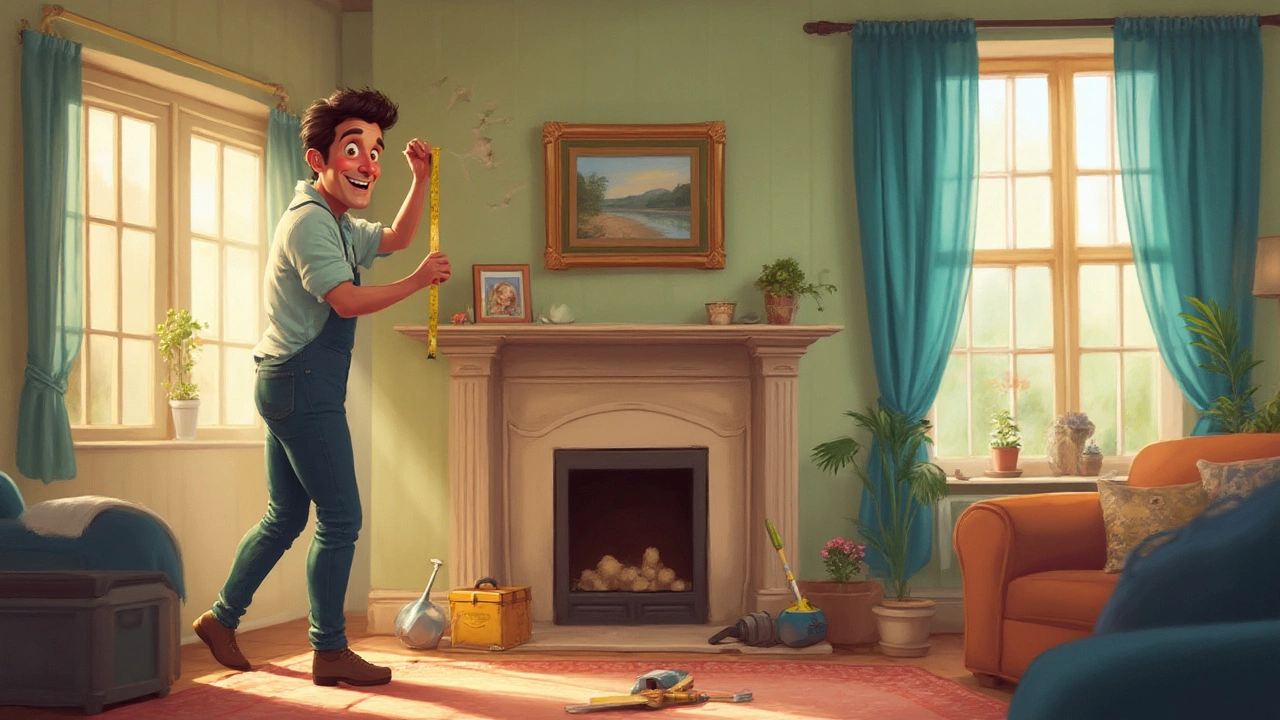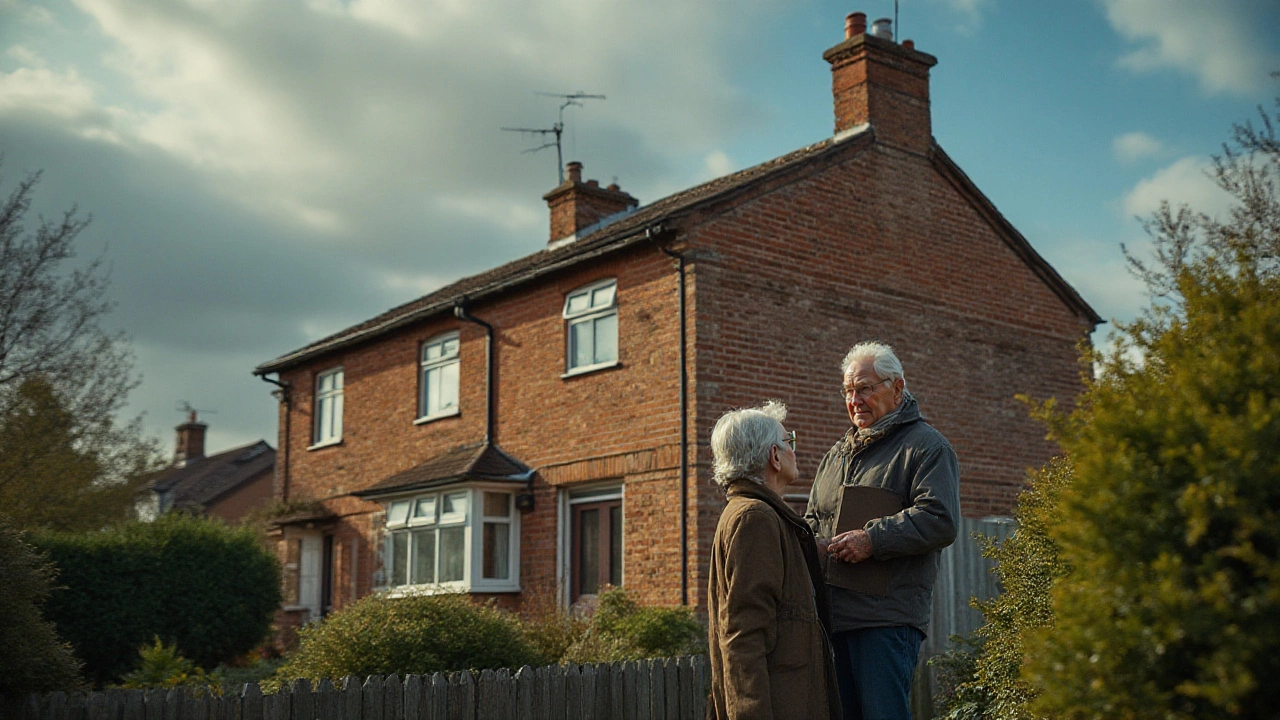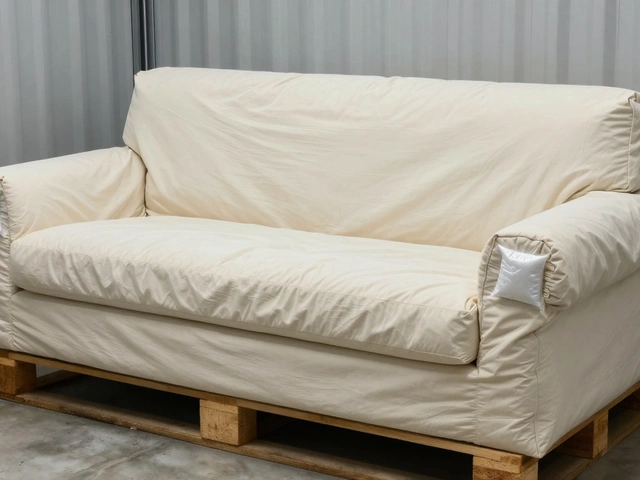If you’ve noticed a brand-new crack zigzagging up the hallway wall—after twenty years of thinking your house was rock solid—you’re not alone. Most people think settling is a new-home problem. Here’s the kicker: it’s not. Older homes can surprise you with creaks, cracks, and mysterious door-jams long after their so-called “settling period” has ended. Builders claim the major movement stops after a few years, but reality likes to throw curveballs. Soil, water, and even shifting tree roots play their part in making even the most seasoned house heave, tilt, and creak again.
Why Do Houses Settle, Even Decades After Construction?
The story starts beneath your feet. The foundation of any house rests on soil, and soil is a living thing—it moves, expands, shrinks, and shifts with the weather and the seasons. Clay soil, for example, swells up after every big rain, then contracts when the weather turns dry. Sand and loam can slowly slide or shift if there’s not enough drainage. This movement tugs on your foundation slab or footings with surprising force. Even if your house was built on a rock-solid base, it faces a lifetime of tiny earthquakes from the ground up.
Here’s another sneaky factor: water. Underground water can erode soil or, if your yard slopes the wrong way, let rainwater seep under the house. Tree roots looking for a drink might burrow under slabs and pull soil away as they suck up the moisture. Northern homes witness ground freeze and thaw cycles that heave everything up and down, year after year. Over time, these ongoing forces keep nudging at your foundation.
The construction era matters too. Homes built in the late '90s or early 2000s often relied on different foundation techniques than the ones used today. Old brick crawl spaces may not be as tough against moisture, while poured concrete slabs have their own issues with cracks over time. Some older homes weren’t built with full understanding of the local soil or with proper grading around the lot, leaving their foundations vulnerable from day one.
The kicker is that small differences during construction can show up as big problems decades later. Maybe a load of fill dirt wasn’t packed tightly enough. Maybe the concrete mix was a little off. Add in decades of weather, and you’re bound to see signs of movement—sometimes even after 20, 30, or 40 years.
Signs Your Home Is Still Settling (or Something Else Is Up)
One of the first signs people notice is cracking. Not all cracks are created equal, though. Hairline surface cracks in plaster or drywall might just be cosmetic—old paint drying out, or a slight shift when the house adjusted to a winter cold snap. However, wider cracks, especially if they’re diagonal or located around door frames and windows, could signal some real foundation movement.
If doors stick suddenly, or you need to use extra muscle to lock a window that was always easy, pay attention. Subtle slope changes in the floor can be another sign—the ball you dropped in the living room keeps rolling to the far corner, even though you could swear that floor was flat a few years ago. Watch for baseboards pulling away from the wall, new gaps between walls and ceilings, or visible seams opening in tile floors.
Cracks in exterior brickwork or along the mortar lines are classic red flags. Some people notice the front step seems a little higher than it used to be, or that the sidewalk out front looks wavy. These shifts can come on fast, after a wet year, or creep in so slowly you barely notice.
Sometimes settlement comes disguised as other problems. A window that won’t open might be warped from humidity, but paired with a stair-step crack in the basement, you’re probably dealing with movement. Odd noises at night—popping, creaking, mysterious thuds—might simply be wood expanding and contracting, but sometimes, they’re the sound of a beam giving way under new pressure caused by settling.

Common Myths and Misconceptions About Old Houses Settling
Ask ten homeowners if a house can still settle after 20 years, and you’ll get a split crowd. Some shrug it off: “Old houses always move a little. Nothing to worry about!” But this sort of thinking can cost thousands in repairs later on. Here’s what you need to know.
- Myth: Houses only settle in the first few years.
Fact: Houses settle for their whole lives, though big changes are more common early on. Yet environmental factors don’t care how old your house is. - Myth: Small cracks are no big deal.
Fact: Small cracks can be harmless, but some are warning shots. It’s about location, width, and whether they’re changing over time. - Myth: Fixing minor settling is always expensive.
Fact: Many issues are quick fixes, especially if you catch them early. Procrastinate, though, and you risk serious foundation work. - Myth: Settlement only comes from poor construction.
Fact: Even the best-built homes deal with movement. Clay expands; water travels; nature has no mercy.
It’s handy to use a pencil or tape to track cracks. Mark the ends, jot down the date, and check back monthly. Growing cracks signal movement that needs a closer look. Photos with coins or a ruler give you perspective over time.
Another misconception is that repairs mean disrupting your life for weeks or months. Plenty of modern solutions let you stabilize areas quickly, sometimes even without tearing up floors or landscaping. Early attention is way cheaper and less stressful than letting things get out of hand.
When to Call a Pro: Knowing the Difference Between Settling and Structural Trouble
Not every crack is cause for panic. But some situations definitely call for a trained eye—and sooner is better. Cracks wider than a quarter-inch, boomerang-shaped cracks, or ones that keep stretching over a few months can all point to bigger problems. Floors with obvious slants or sudden dips, and doors you just can’t get to fit back into their frames, deserve a professional check.
If your basement is musty or you see signs of water seepage, that can speed up foundation movement. Mold smells, efflorescence (white powdery mineral deposits) on walls, or dark, spreading stains mean water is traveling where it doesn’t belong. Basement water problems and foundation settling feed off each other, making it tougher to fix if you wait too long.
Some homeowners turn to DIY fixes—foam fillers, new caulking, patching up drywall. Those can make a difference cosmetically, but hidden movement underneath needs more. Professional foundation repair companies use laser levels, special sensors, and years of pattern spotting skills to figure out what’s normal and what’s not.
Don’t just pick the first name in a Google search. Check for reviews, ask about experience with older homes, and get a couple of opinions. A good pro will recommend both immediate fixes and long-term prevention. Sometimes it’s as simple as improving your drainage or trimming back thirsty trees. Other times, you may need to install piers or bolster footings to keep that house strong for another twenty years—or longer.

Tips for Preventing and Managing Settlement in Older Houses
While you can’t control the clay under your yard or keep Mother Nature from dropping two months of rain in a weekend, you can do a lot to guard against the worst effects of settling. Start by walking your foundation once a season. Look for new cracks, inspect slopes in the yard, and make sure gutters and downspouts are pushing water well away from the house.
Regularly check under your house (crawl space or basement) for signs of moisture, rot, or insect activity. Dry dirt is your friend—damp, soggy soil means you need better drainage. Consider regrading flower beds, adding gravel, or even investing in a French drain if water is your enemy. Annual gutter clean-outs keep rain where it belongs: away from your foundation.
Keep records of all the subtle changes—photos, notes, even a journal. The more you can show a professional, the better your odds of a quick and accurate diagnosis. Home inspectors recommend opening and closing every window and door in your house a couple times a year—watch out for new sticking or gaps around frames.
If tree roots are pushing up against the foundation—or you suspect they might—bring in an arborist. Some root barriers can block thirsty trees from wrecking your soil. Don’t rip out every old tree, though; established roots help keep the soil stable in many cases.
If you ever do need repair work, ask about modern techniques. Things like steel piers, helical piles, or carbon fiber strips mean most foundation jobs take days, not weeks. They’re less invasive and help fix the underlying problems rather than just hiding symptoms.
Finally, don’t get comfortable just because your house made it through twenty calm years. Even minor shifts delivered by clay soil, heavy rains, or drought can stack up. The homes that age best are the ones where small fixes keep up with small changes—saving you from big, wallet-busting problems later on.
So, can a house settle after 20 years? Absolutely. But with sharp eyes, a little bit of maintenance, and the right professional help when needed, almost any house can outlast your mortgage—and then some.




